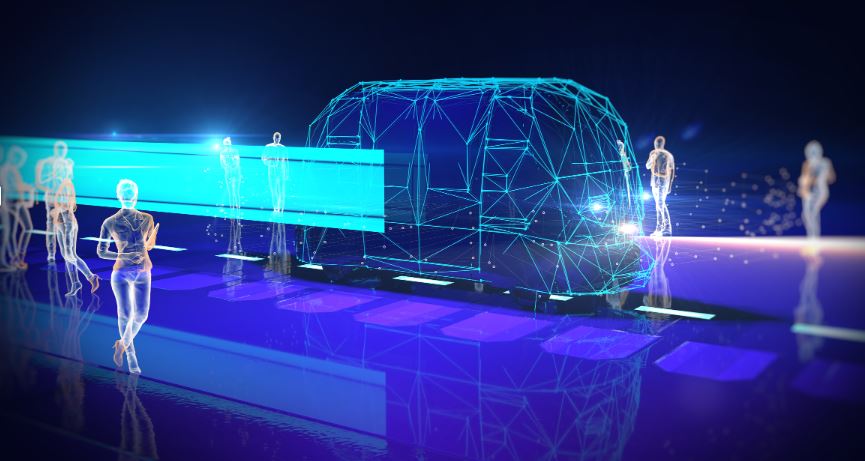Understanding the challenges: Designing a robot vs. designing an unmanned vehicle
Designing a robot and designing an unmanned vehicle both present unique engineering challenges due to their distinct purposes, capabilities, and operating environments. Here's a comparison of the key engineering challenges for each.
What's the difference between a robot and an unmanned vehicle?
As we discussed in a previous post (Differences between a Robot and an unmanned vehicle), Robots tend to have a broader range of capabilities and are often more adaptable to different tasks and environments. Unmanned vehicles, on the other hand, are more specialized in their functions and are often designed to operate in specific contexts, such as aerial drones for surveillance or autonomous cars for transportation.

Understanding the distinct challenges to designing a robot vs. designing an unmanned vehicle
While both robots and unmanned vehicles share some challenges related to autonomy, sensors, and energy efficiency, the specific challenges are shaped by the tasks they perform, the environments they operate in, and their intended interactions with the world. Successful designs require interdisciplinary collaboration, innovative solutions, and a deep understanding of both the technology and the intended application.
Robot Design Challenges:
Manipulation and Interaction: Robots often need to interact with their environment or objects in a precise and versatile manner. Developing effective grippers, arms, and sensors for tasks like picking up objects, assembling components, or performing delicate tasks requires advanced mechanical and control engineering.
Sensing and Perception: Robots require various sensors to understand their surroundings, such as cameras, LiDAR, depth sensors, and touch sensors. Integrating these sensors and processing their data to create an accurate representation of the environment is a significant challenge.
Localization and Mapping: Robots often need to navigate within complex environments. Developing algorithms for simultaneous localization and mapping (SLAM) is essential for robots to understand where they are and create maps of their surroundings in real-time.
Autonomy and Decision-Making: Designing robots to make autonomous decisions based on sensor input and environmental conditions requires developing intelligent algorithms, machine learning, and artificial intelligence techniques.
Human-Robot Interaction: If the robot interacts with humans, ensuring safety, natural communication, and understanding human intentions are challenges that involve both hardware and software design considerations.
Energy Efficiency: Robots often operate on batteries, and optimizing their power consumption to extend operating time while maintaining performance is a significant challenge.
Unmanned Vehicle Design Challenges:
Navigation and Control: Developing precise navigation and control systems to ensure safe and accurate movement is crucial for unmanned vehicles. This involves integrating sensors like GPS, IMUs, and cameras and designing control algorithms for stability and maneuverability.
Obstacle Avoidance: Unmanned vehicles must detect and navigate around obstacles in their path, which requires real-time sensing, accurate mapping, and decision-making algorithms.
Aerial Dynamics (for Aerial Vehicles): Designing unmanned aerial vehicles (drones) involves understanding aerodynamics, propulsion systems, and stability control to achieve controlled flight.
Energy Management: Ensuring sufficient energy supply for the vehicle's propulsion, communication, and onboard systems is a challenge, especially for long-endurance missions.
Communication and Data Handling: Unmanned vehicles often need to transmit and receive data in real-time, which requires robust communication systems that can handle varying conditions and data rates.
Regulations and Safety: Designing unmanned vehicles that adhere to aviation or transportation regulations, ensuring their safe operation, and managing potential risks are crucial considerations.
Environmental Adaptation: Unmanned vehicles might need to operate in diverse and unpredictable conditions. Designing for weather resistance, temperature variations, and other environmental factors is essential.
Interested in Learning more about Robotics or Unmanned Vehicles?
As with all our Centers of Excellence, Boston Engineering Robotics provide:
• Unparalleled experience, leadership, and strategy
• Focused research, development, and technology innovation
• Unique knowledge, expertise, and processes
• Optimized, streamlined, and efficient client centered solutions
Visit our Robotic Solutions page to Learn More
 Understanding the Importance of Strategic Robotic Solutions
Understanding the Importance of Strategic Robotic Solutions
Every business faces unique challenges, and every robotic investment requires unique development. One pathway to a successful transition is to start by considering the available Robotic Solutions tools in the context of the business need, the skills of the workforce, and the IT structure ready to support the changes required. Successful (and profitable) solution design and integration is crucial, so make sure you have access to the knowledge and capabilities to make that happen. If you're unsure as to whether you or your team have those skills, your best option is to partner with a team that has this expertise and ensure your outcomes meet the potential of your project.

Ready to Begin your Robotics Solution Evaluation?
Whether you’re looking to enhance your current team or outsource a solution to meet rising demands on your time, working with Boston Engineering robotic solutions experts is the right choice. Don't leave complex designs that rely on layers of integration to slow down your team, extend deadlines, or even worse: cause a project failure. Know you're going to get the results you want by working with an industry leader in development and deployment of high performance control systems.
Let's start the robotics solution conversation
No matter the challenge, our team possesses the expertise in the engineering disciplines and technologies you need to bring your vision to life. Impossible Challenge? Try Us.
Imagine your Impact: Stay up-to date- with the latest insights and trends we're watching. Add your email address below and sign up for a Monthly Summary of our most impactful posts!
Subscribe to our Monthly Newsletter










